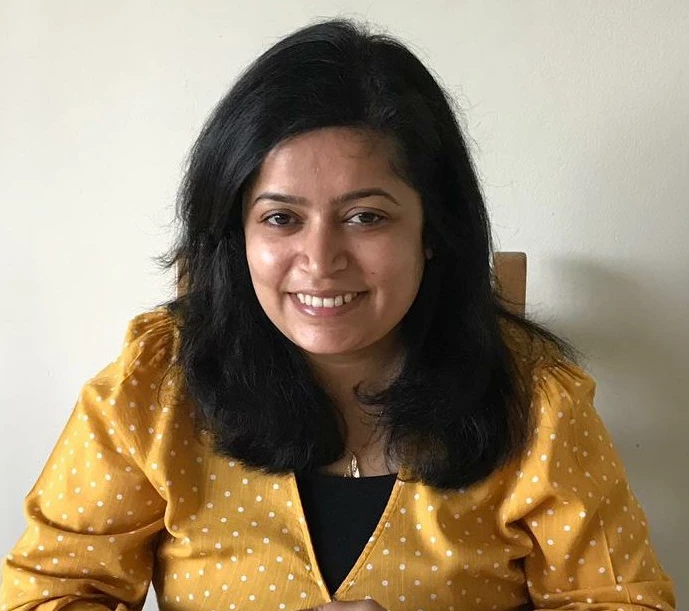 The creative and cultural sector can serve as a powerful means of advocacy, empowerment, and social inclusion. Copyright: Shutterstock
The creative and cultural sector can serve as a powerful means of advocacy, empowerment, and social inclusion. Copyright: Shutterstock
The cultural and creative sector accounts for 3.1 percent of global gross domestic product (GDP) as of 2022 , according to a recent report by UNESCO. This rapidly growing sector generates nearly 30 million jobs worldwide and accounts for 6.2 percent of all employment.
The Solutions for Youth Employment (S4YE) report, Orange Economy: As a Driver of Jobs for Youth, highlights an interesting finding: the share of youth in cultural occupations in low-income countries is higher than that in developed countries . For instance, the share of people employed in cultural occupations between 15 and 24 years of age is 33 percent in Pakistan, 27.1 percent in Ghana, and 25.3 percent in Uganda. Further, according to data from a study of 35 low- and middle-income countries surveyed by UNESCO, more women than men are employed in cultural work in over half of these countries. In Sri Lanka, 12 percent of the female workforce is engaged in a cultural occupation compared to 3 percent of male workers.
Recognizing the significant global economic and social contributions of the cultural and creative sector—also known as the “orange economy”—we invited representatives from three global organizations working on youth-focused projects to share their learnings about how investing in the creative sector has created inclusive employment opportunities for young people in developing economies, particularly for women, persons with disabilities (PWD), and other marginalized communities.
The webinar, "Putting Creativity to Work!", featured examples and lessons learned from the Equal Opportunities and Social Development (EOSD) project implemented by GIZ on behalf of the German Government in Egypt; Feria de Arte Mexicano Accesible (FAMA), an independent contemporary art fair in northern Mexico; and the initiatives of Dream Catchers Academy, a youth-led organization in Nigeria.
Here are three key takeaways from the webinar:
- Creativity fosters inclusion in marginalized communities
The creative and cultural sector can serve as a powerful means of advocacy, empowerment, and social inclusion, especially for marginalized and vulnerable communities. Several studies have shown that an arts education has a positive effect on the self-esteem of at-risk youth and enhances their resilience. It also enables those struggling with mental health and social issues to build relationships and engage positively with others in their communities. FAMA, for example, developed a collaborative photography program in collaboration with a prominent photographer in Mexico and a non-profit organization. The program trained and mentored vulnerable youth, including immigrants, those from violent homes, and those struggling with drug and alcohol addictions, allowing them to display their work at the art fair at the end of the program. The program enabled young people to build their self-esteem and feel empowered, generate additional income, gain technical skills that strengthen their employability prospects, and build a professional network.
- The arts amplify women's voices
The arts have long been known to give voice to women, particularly to those who have experienced trauma, by allowing them a means to share their stories, inspire and empower others, and fight back. In Nigeria, Dream Catchers Academy works with underprivileged girls who have been subject to abuse, neglect, or economic hardship. The girls enrolled in its program gain quality education that emphasizes the arts to develop sustainable life skills. Upon graduation, the girls become ambassadors for social change, advocating for women's rights and spreading awareness about issues such as period poverty, child marriage, and female genital mutilation.
- The creative sector enhances accessibility to technology and inclusion
The COVID-19 pandemic accelerated the already rapid digital transformation taking place globally, with stakeholders carefully examining the implications of this transformation on social inclusion. In the creative sector, the use of digital tools and technologies is enabling the inclusion of largely excluded communities such as persons with disabilities who, with enhanced accessibility features, can both actively participate in the sector and enjoy its products. This is, for instance, reflected in EOSD's Mobile Cinema Program, in which youth learn how to create short, accessible films with their mobile phones by utilizing assistive technologies such as audio enhancement and closed captions. The participants were also trained to teach persons with disabilities how to use such technologies to create their digital creative products.
The value of the orange economy: in numbers
The orange economy shows tremendous promise, with governments across the world increasingly realizing its potential as its momentum grows. For example, Colombia, having seen the sector's value grow from $6.2 billion in 2010 to $8.2 billion in 2017—at an average annual growth rate of 5.5 percent—launched its “Orange Economy” policy in 2018 to stimulate private sector investment in creative and cultural industries. The Ethiopian government proposed several strategies to support the arts, recognizing creative and cultural industries as a potential sector for high job creation in the Ethiopian Jobs Creation Commission's Plan of Action for Job Creation 2020-2025.
Sustainable growth of the creative and cultural sector can be achieved by targeted policymaking, multi-sectoral collaboration, and key stakeholder engagement. To enhance the discussion on creative sector job opportunities for youths, S4YE is working on building a network of interested stakeholders—which will include World Bank projects, non-profits, private sector organizations, and other experts in the space. Through this network we plan to deepen our understanding of creative sector areas such as fashion, film, and technology. We will regularly host learning events and knowledge exchanges, so if you would like to become part of this upcoming network to contribute and collaborate, please write to us at jlacle@ifc.org.




Join the Conversation